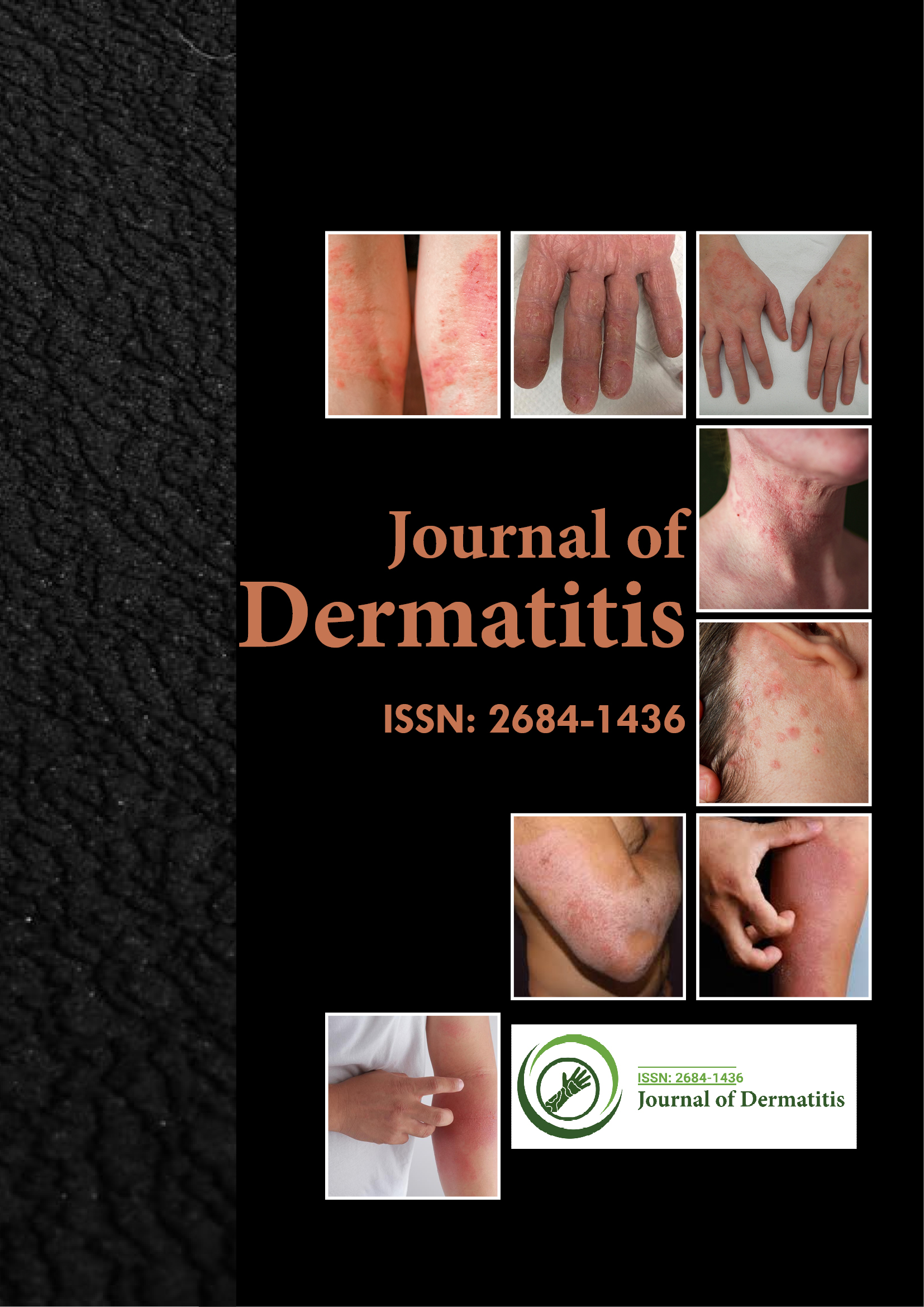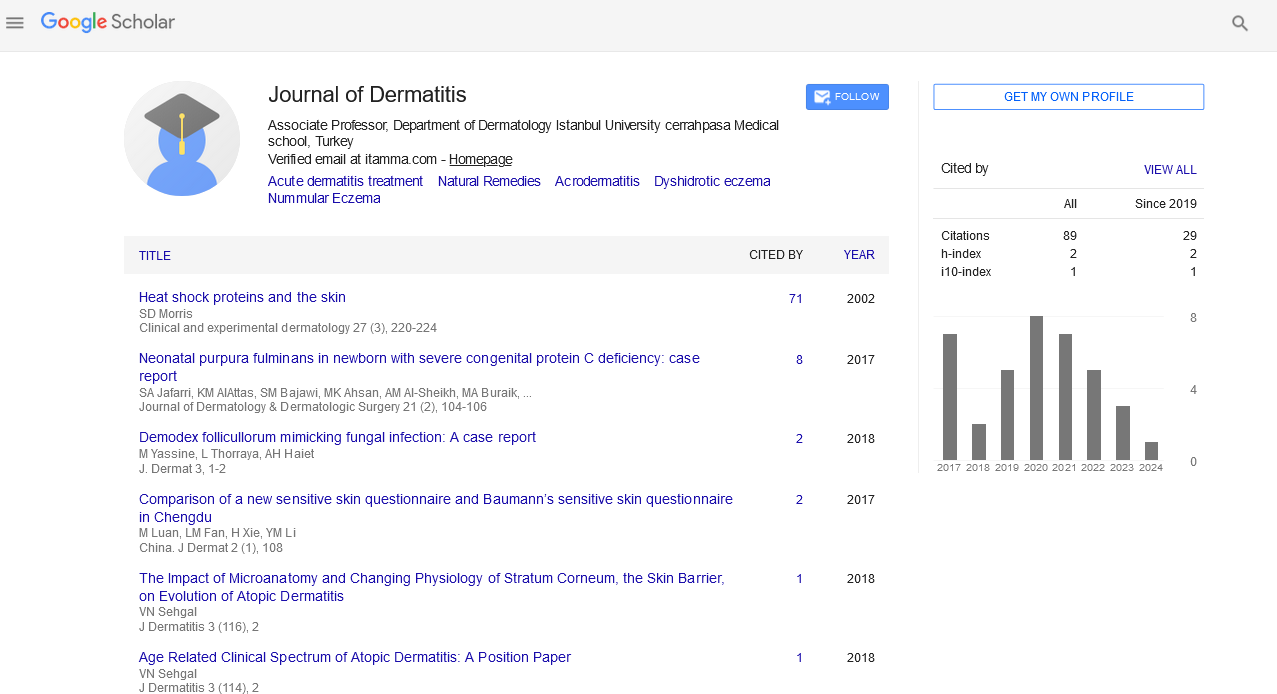Indexed In
- RefSeek
- Hamdard University
- EBSCO A-Z
- Euro Pub
- Google Scholar
Useful Links
Share This Page
Journal Flyer

Open Access Journals
- Agri and Aquaculture
- Biochemistry
- Bioinformatics & Systems Biology
- Business & Management
- Chemistry
- Clinical Sciences
- Engineering
- Food & Nutrition
- General Science
- Genetics & Molecular Biology
- Immunology & Microbiology
- Medical Sciences
- Neuroscience & Psychology
- Nursing & Health Care
- Pharmaceutical Sciences
Perspective - (2023) Volume 8, Issue 3
Overview of Intravenous Medications to Treating the Lichenoid Dermatitis
Walker Abdulaziz*Received: 29-Mar-2023, Manuscript No. JOD-23-21111; Editor assigned: 31-Mar-2023, Pre QC No. JOD-23-21111 (PQ); Reviewed: 21-Apr-2023, QC No. JOD-23-21111; Revised: 28-Apr-2023, Manuscript No. JOD-23-21111 (R); Published: 05-May-2023, DOI: 10.35248/2684-1436.23.8.196
Description
Lichenoid dermatitis is a chronic inflammatory skin condition that causes scaly, itchy, and red patches on the skin. The condition can affect any part of the body, including the scalp, face, neck, arms, and legs. It is also known as lichen planus-like keratosis or lichenoid eruption. The exact cause of lichenoid dermatitis is unknown, but it is believed to be an immune system reaction.
Treatment for lichenoid dermatitis depends on the severity of the condition and the affected areas of the body. There are various treatment options available for lichenoid dermatitis, including topical creams, oral medications, and phototherapy.
Topical creams are the first line of treatment for lichenoid dermatitis. Topical corticosteroids are the most commonly prescribed creams for this condition. These creams help to reduce inflammation and relieve itching. Mild cases of lichenoid dermatitis can be treated with low-potency corticosteroids, while more severe cases require high-potency corticosteroids. Topical immunomodulators, such as tacrolimus and pimecrolimus, are also used to treat lichenoid dermatitis. These creams work by suppressing the immune system and reducing inflammation.
Oral medications are prescribed for more severe cases of lichenoid dermatitis that do not respond to topical treatments. Oral corticosteroids are prescribed in short courses to reduce inflammation and itching. Long-term use of oral corticosteroids can have serious side effects, such as weight gain, high blood pressure, and osteoporosis. Other oral medications used to treat lichenoid dermatitis include retinoids, such as acitretin and isotretinoin, which are derived from vitamin A. These medications help to reduce inflammation and suppress the immune system.
Phototherapy is a treatment that uses ultraviolet light to treat skin conditions. Narrowband Ultraviolet B (UVB) therapy is the most common type of phototherapy used to treat lichenoid dermatitis. This treatment involves exposing the affected areas of the skin to UVB light. Phototherapy can be used alone or in combination with topical or oral medications.
In addition to medical treatments, there are also some self-care measures that can help to relieve symptoms of lichenoid dermatitis. These include:
• Avoiding harsh soaps and detergents that can irritate the skin
• Keeping the affected areas of the skin moisturized with a nongreasy moisturizer
• Avoiding scratching or rubbing the affected areas of the skin
• Wearing loose-fitting clothing to avoid irritation
• Avoiding exposure to extreme temperatures, such as hot showers or baths
It is important to note that lichenoid dermatitis is a chronic condition, which means that it may recur even after successful treatment. Regular follow-up appointments with a dermatologist are necessary to monitor the condition and adjust treatment as needed.
In conclusion, lichenoid dermatitis is a chronic skin condition that causes scaly, itchy, and red patches on the skin. Treatment for lichenoid dermatitis depends on the severity of the condition and the affected areas of the body. Topical creams, oral medications, and phototherapy are the main treatment options. In addition, self-care measures can also help to relieve symptoms of lichenoid dermatitis. It is important to work closely with a dermatologist to find the best treatment plan for each individual case.
Citation: Abdulaziz W (2023) Overview of Intravenous Medications to Treating the Lichenoid Dermatitis. J Dermatitis. 8:196.
Copyright: © 2023 Abdulaziz W. This is an opsen-access article distributed under the terms of the Creative Commons Attribution License, which permits unrestricted use, distribution, and reproduction in any medium, provided the original author and source are credited.

